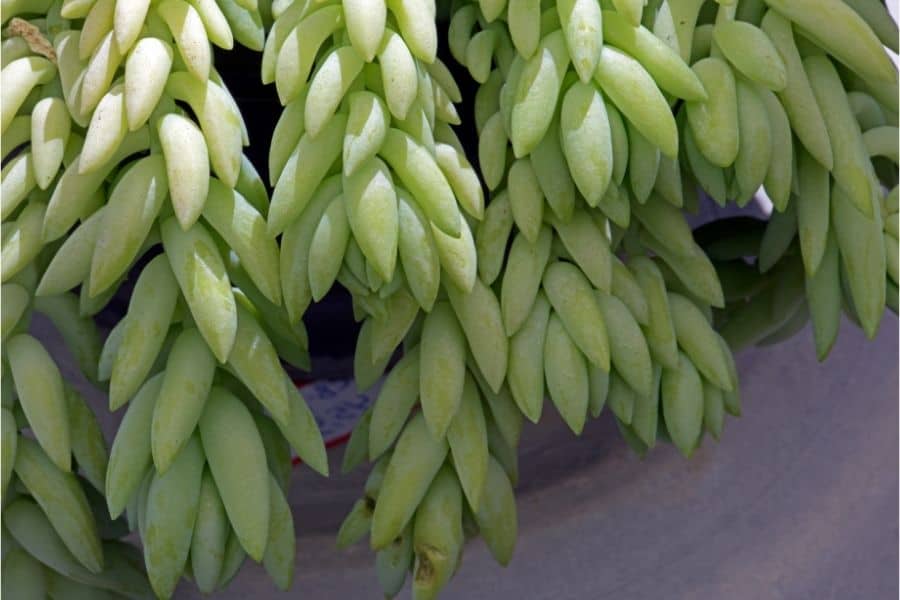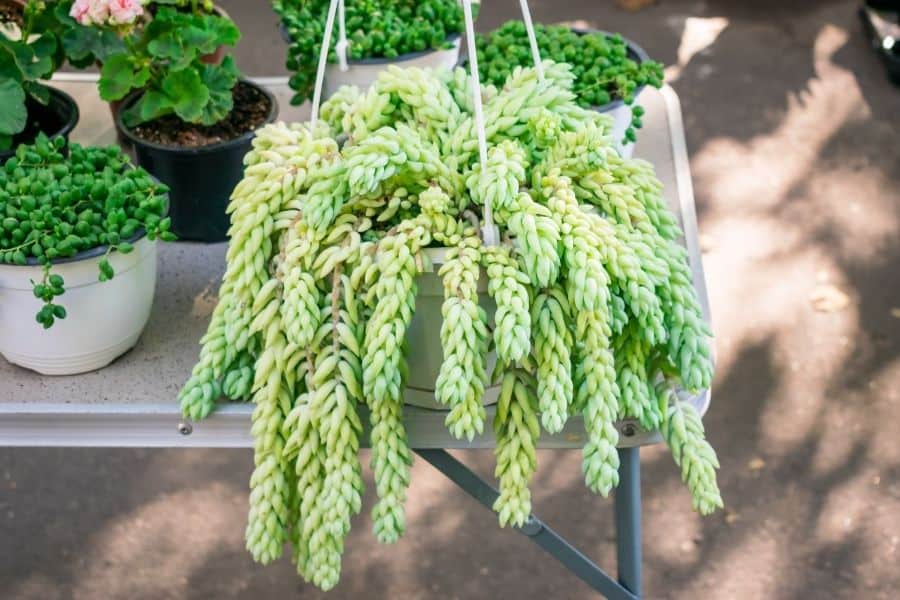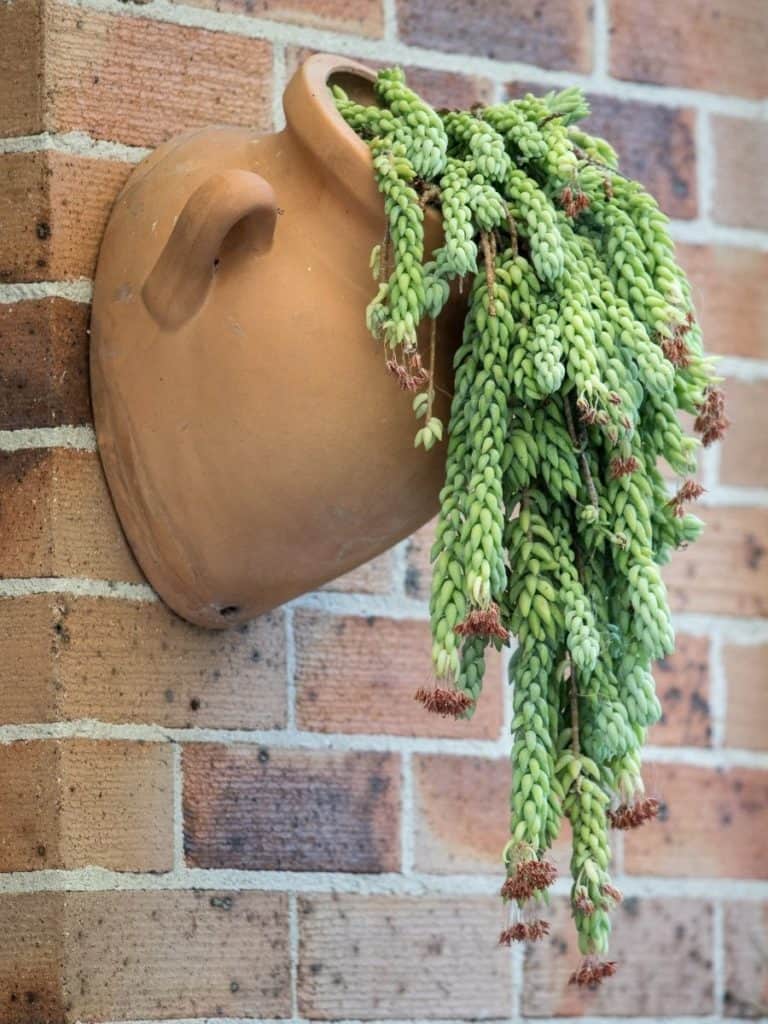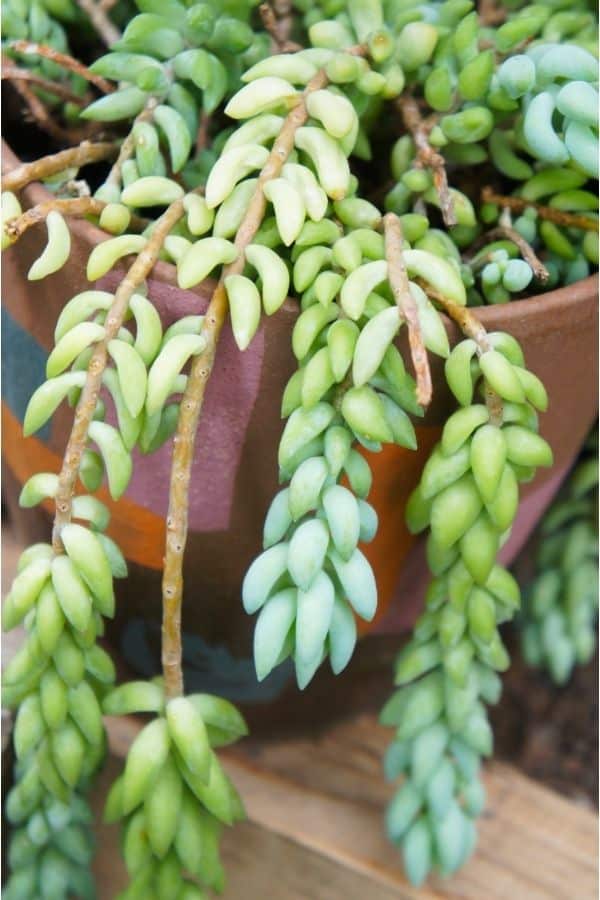Growing Donkey Tail Succulents: A Quick Guide
Hey, plant lovers! Have you ever seen a donkey tail plant? Its real name is Burro’s tail, but people also call it lamb’s tail or horse’s tail because it looks like a bunch of tails hanging down.
This cool plant comes from warm places like Honduras and Mexico. It has leaves that are shaped like little teardrops and are a pretty blue-green color. You can grow donkey tails outside if you live where it’s hot, like in places where it never gets super cold (that’s USDA Zones 9 to 11 for the plant pros).
But guess what? You can also grow them inside your house, and they love hanging out in big pots or baskets.
Sometimes, if they’re really happy outdoors, they might surprise you with tiny flowers in shades of red, pink, white, or yellow when summer is almost over. But indoors, they’re pretty shy about blooming.
Stick with me, and I’ll show you all the tips and tricks to make your donkey tail succulent the happiest plant around! Let’s get started!

Contents
How To Care For Donkey Tail Succulents
Taking care of a donkey tail succulent is like taking care of a little pet that loves the sun! So, let’s jump into how to keep your donkey tail plant super happy.
Sunshine Time
Your plant buddy likes to soak up the sunshine, kind of like how you’d enjoy a sunny day at the beach. For indoor plants, put them near a window that gets lots of light, like on a bright windowsill or a sunny balcony. Outdoors, find a spot where it gets gentle morning sun but stays cool when the afternoon gets hot, so its leaves don’t get sunburned.
If your plant starts looking less colorful and more dull-gray, it’s telling you, “Hey, that’s too much sun for me!” It might even make a white waxy layer to protect itself—pretty cool, right?

Related Post:
Donkey Tail Plant Turning Yellow? 7 Things You Should Do Now
Water Splash
Once your plant feels at home, don’t worry about forgetting to water it. It’s tough and doesn’t mind being thirsty. During spring and summer, water it more often. But in fall and winter, it’s like it goes into chill mode, so you can water less.
Indoor plants might need a big drink once a month, while outdoor plants can handle watering every 2 or 3 weeks. The soil should be totally dry before you water again. Don’t overdo it—your donkey tail plant isn’t a fan of soggy feet!
Dirt Mix
These plants love sandy soil that drains water fast. Whether planting them in a pot or outside, use special soil for cacti or mix your own by adding things like pumice or perlite to regular potting soil. And if it’s going outside with other plants, pick a spot that doesn’t stay wet, maybe with some sand mixed in for super drainage.
Chill and Humidity
Donkey tail plants dig warm and cozy but can handle cooler temps better than some of their succulent cousins. Keep them happy between 65°F and 75°F, indoors or out. But when it gets chilly, around 40°F, bring them in from the cold!
They’re not into super humid spots, either, so the bathroom? Not the best hangout for them, unless you like living on the edge.
Feed Me Maybe?
Fertilizer is like vitamins for plants. They don’t really need it, but it’s like a health boost. In the spring, sprinkle some slow-release fertilizer that’s balanced with stuff like nitrogen, phosphorus, and potassium. For younger plants or bigger ones, adjust the strength because you don’t want to overfeed them. Adding compost or worm poop (yep, worm castings!) can also make the soil extra yummy for them.
Where to Live
Think of the donkey tail plant as having a hairstyle that looks best when it can hang lower. Hanging pots or tall containers are perfect for letting their leaves drape down beautifully. Terracotta pots with holes at the bottom are awesome because they help keep the roots dry.

FAQ’s
How Fast Do Donkey Tail Succulents Grow?
Donkey tail succulents grow very slowly and steadily and the plant usually reaches maturity in around 6 years, during which, the plant can grow up to 4 feet in length if taken care of properly. However, on average, the donkey tail plant grows up to 24 inches in length.
Why Is My Donkey Tail Succulent Losing Leaves?

The donkey tail succulent is quite fragile and leaf loss is the most common problem. The plant must be handled with extra care because the beaded leaves can break off even at the slightest touch. So, it is best to place the plant and forget it and avoid handling it repeatedly.
Avoid moving the plant often and disturbing it and always water it wherever you have placed it. Ideally, place your donkey tail plant in a place such as a windowsill or hanging pot in the corner, where it won’t be disturbed. Avoid repotting the succulent as long as it is possible and keep it out of reach of kids and pets.
Related Post:
Burro’s Tail Leaves Falling Off: 3 Causes and Solution
To wrap it up, donkey tail succulents are pretty chill to care for and add a super cool touch to your space with their long, trailing look. Set them up right, and you’ll have a low-maintenance green buddy that’s always in style!
